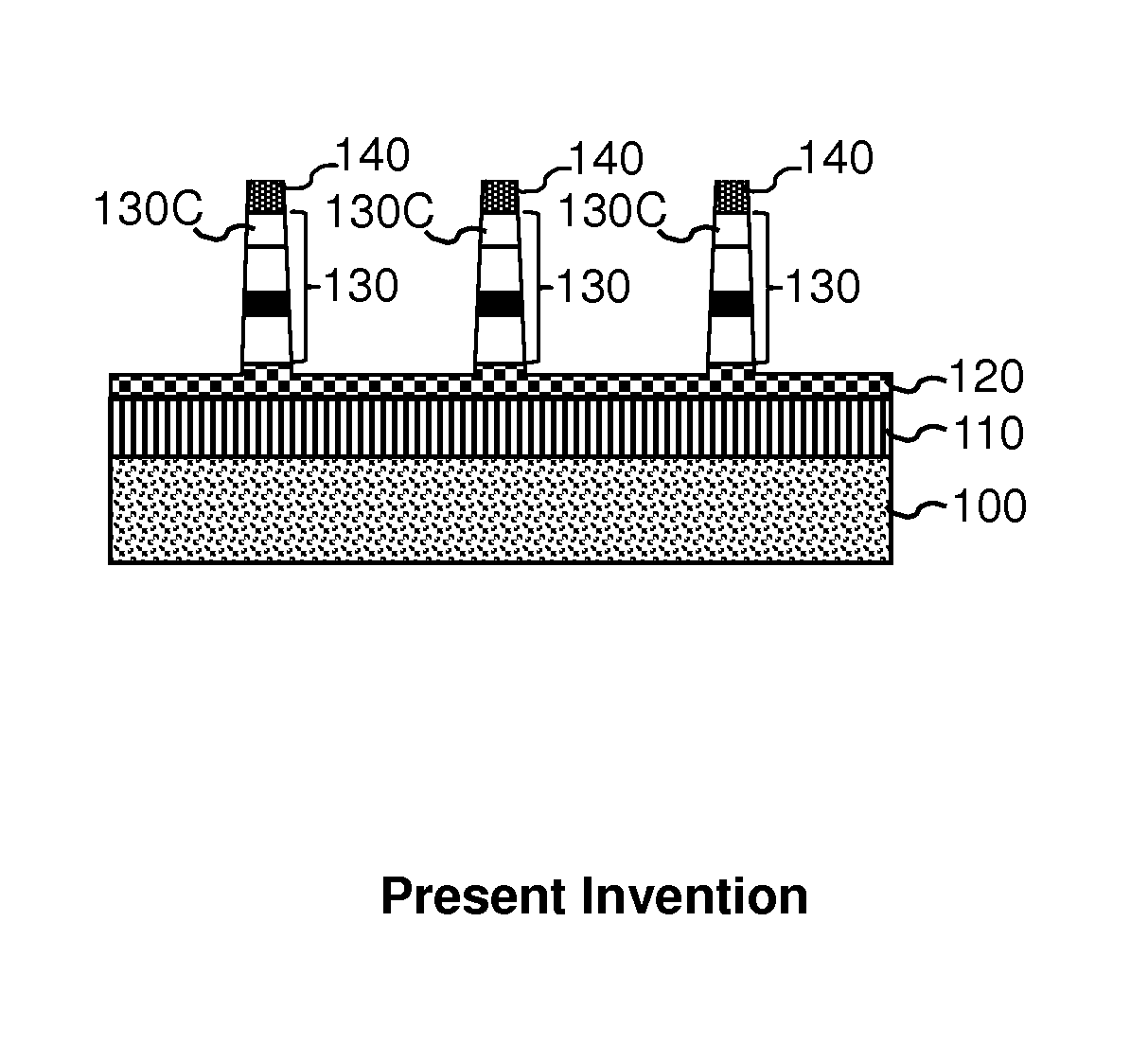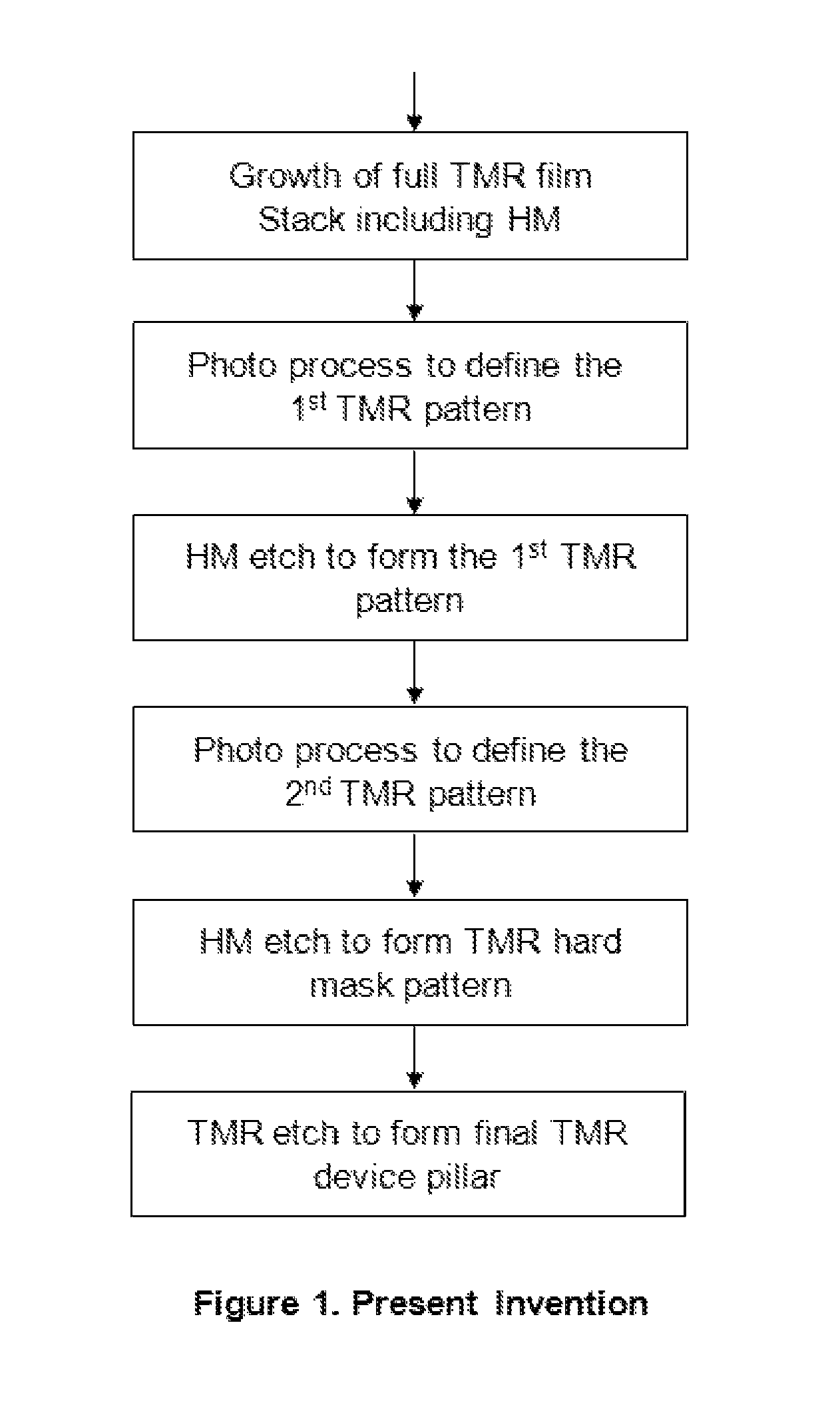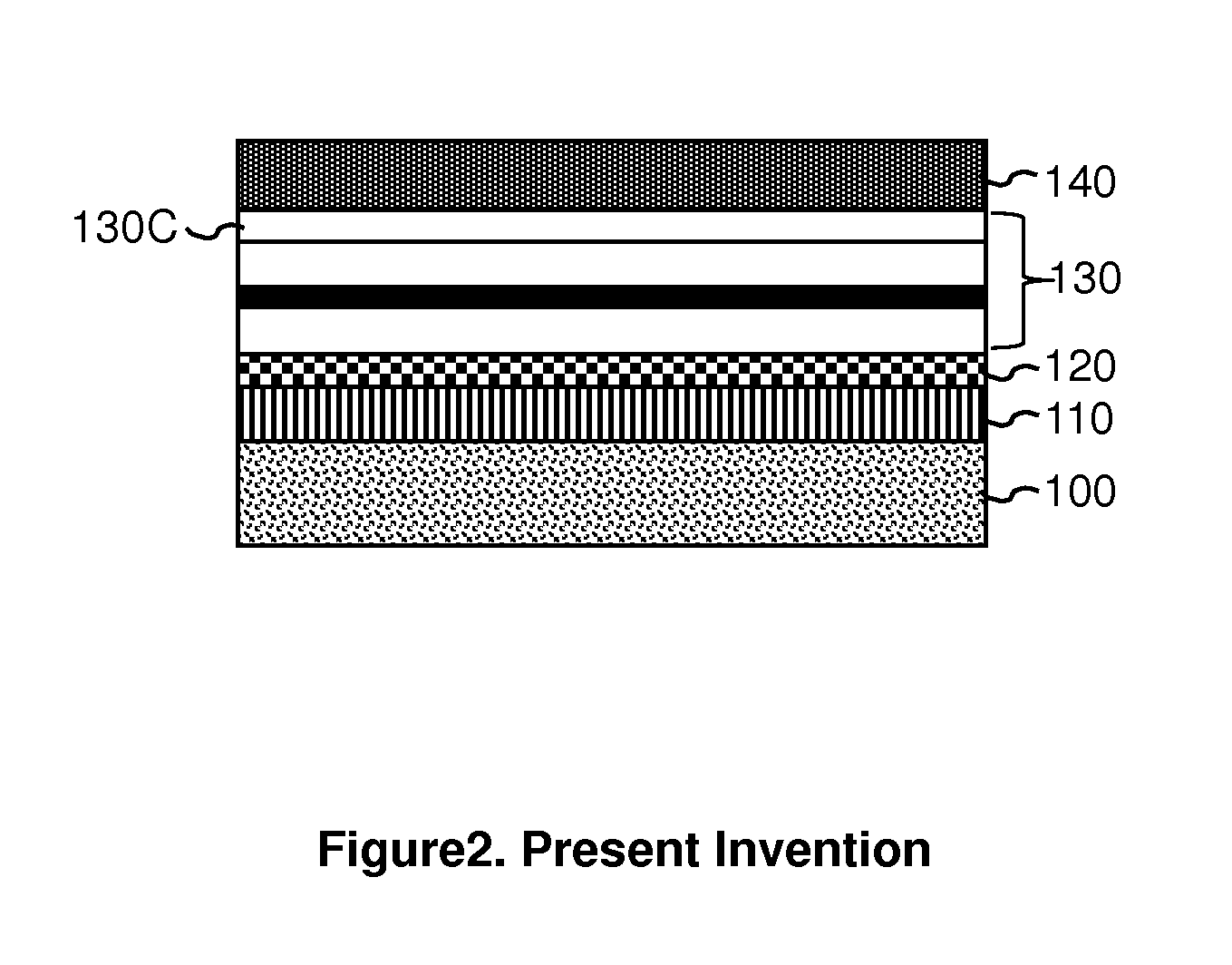Method of manufacturing MRAM memory elements
a technology of memory elements and mram, which is applied in the manufacture/treatment of galvano-magnetic devices, galvano-magnetic device details, etc., can solve the problems of generating defects, affecting the performance of mram, and difficult to form ultra-small photo-resist pillar patterns
- Summary
- Abstract
- Description
- Claims
- Application Information
AI Technical Summary
Benefits of technology
Problems solved by technology
Method used
Image
Examples
Embodiment Construction
[0020]Spin transfer torque magnetic random access memory (STT-MRAM) requires small dimensions of magnetoresistive elements to be able to recording, or switch, with a small spin transfer current. Due to the limitation (such as UV light source and photo-resist thickness) of the current photolithography technology, it is extremely difficult to form ultra-small photo-resist pillar mask pattern array with a good straightness and uniformity. If the cell size is getting very small for high capacity applications, the photo-resist pillars will tilt, or bend, or even collapse before etching.
[0021]In this invention, we use dual photolithography processes to form hard mask pillar array first before etching and patterning the magnetoresistive stack into final memory element size. A process flow chart of the fabrication is as shown in FIG. 1. First, the full stack of the MRAM film layers is deposited on a substrate (100) in an ultra-high vacuum system. The film stack, as shown in FIG. 2, contains...
PUM
 Login to View More
Login to View More Abstract
Description
Claims
Application Information
 Login to View More
Login to View More - R&D
- Intellectual Property
- Life Sciences
- Materials
- Tech Scout
- Unparalleled Data Quality
- Higher Quality Content
- 60% Fewer Hallucinations
Browse by: Latest US Patents, China's latest patents, Technical Efficacy Thesaurus, Application Domain, Technology Topic, Popular Technical Reports.
© 2025 PatSnap. All rights reserved.Legal|Privacy policy|Modern Slavery Act Transparency Statement|Sitemap|About US| Contact US: help@patsnap.com



